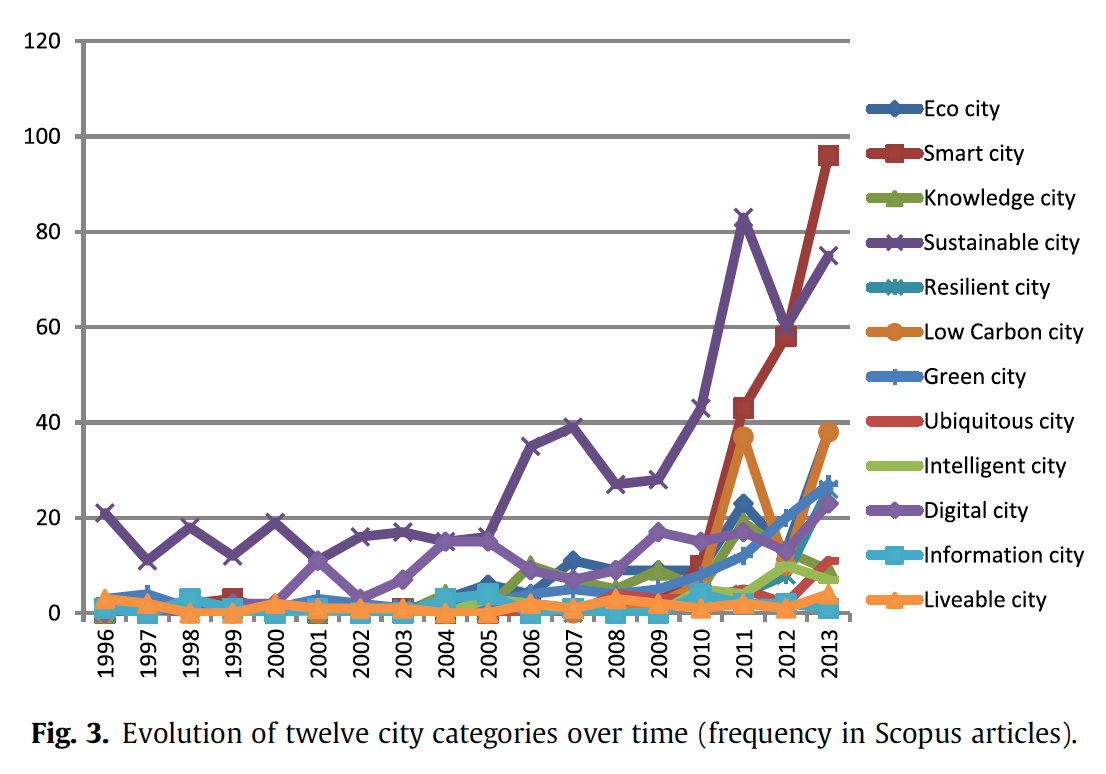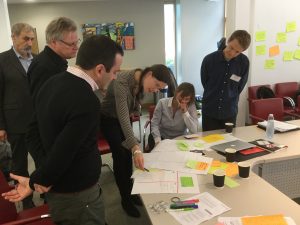Join JPI UE
Faq
FAQ
Please click here for the frequently asked questions we collected.
If you have an additional questions you are welcome to mail us at info@jpi-urbaneurope.eu
The series of Urban Transitions Pathways Symposia is designed to make some sense of how to deal with this plethora of sometimes clashing, sometimes synergistic concepts – sometimes even used interchangeably![1]
In other words, to tackle the fragmentation in (European) urban research and innovation, as De Jong et al. concluded on how these various imaginaries are used in the academic literature:
“Each of the city categories harbors a different view of what the city is and how it works, with respect to the role of citizens and the way they relate to the governance of the city, with respect to the interactions between the city and its natural environment, and with respect to the role of urban infrastructure systems and services in the city’s economy and livability.”[2]

Figure from de Jong, M., Joss, S., Schraven, D., Zhan, C., & Weijnen, M. (2015). Sustainable–smart–resilient–low carbon–eco–knowledge cities; making sense of a multitude of concepts promoting sustainable urbanization. Journal of Cleaner Production, 109, 25–38; used with permission.
Furthermore, a fragmentation identified by, among others, the FP7 Urban-Nexus project as also running between groups of societal actors and also having a part in generating wicked issues around urban sustainable development. Hence, there is an identified need for boundary traversing work in-between these:
“Building bridges between stakeholders (‘boundary spanning’) is key to effective social learning. Knowledge ‘boundaries’ between different stakeholder groups represent a key obstacle for sustainable urban development. Boundary ‘spanning’ is possible through the ‘co-production’ of knowledge (intensive engagement of participants on each side of the boundary) and the production of ‘boundary objects’ (common products of negotiation – e.g. maps, diagrams, plans, codes – at the boundary between science and policy).”[3]
By connecting the dots in this way, there is a sense of the need for not just another umbrella term to encapsulate all of these logics or imaginaries. Rather, it is about finding ways to shape conceptual communication lines between them – a literal infrastructure or infra-language to lessen the risk of opening new wicked issues or clashes.


Discussions and explorations at the Urban Transitions Pathways Symposium 2017, photos by Christine Bell, Centre for Facilitation.
The point is that any transition pathway or urban transformation in general risks being just a mess of counterproductive forces if we do not develop the skills and competences to work ‘in-between’, and to work with constant learning between not just the conventional sectoral silos but also these imaginaries between logics and approaches.
However, the effort to connect the dots is not just an academic exercise. The idea is to support a transdisciplinary community of practice. That is, both academic strategic research as well as actors immersed in the day-to-day urban development on the ground and in planning situations.
In this way the symposium series is part of Agora – the Stakeholder Involvement Platform as it aims to connect a dialogue on a conceptual development, to further the urban transformations and support transitions pathways foreseen in the Strategic Research and Innovation Agenda (SRIA[4]), with a mission-oriented approach among urban professionals ‘on the ground’.
In the light of this, discussions turned around four major concerns which were reflected to support a community of practice around urban transformations:
These outcomes also anticipate the Scientific Advisory Board’s position paper Urban Transitions towards Sustainability – Challenges for Science and Implementation currently in preparation.
References
[1] de Jong, M., Joss, S., Schraven, D., Zhan, C., & Weijnen, M. (2015). Sustainable–smart–resilient–low carbon–eco–knowledge cities; making sense of a multitude of concepts promoting sustainable urbanization. Journal of Cleaner Production, 109, 25-38; p. 26
[2] De Jong et al. ibid; p. 36.
[3] Urban-Nexus FP7 Results Synthesis, pp. 12–13
[4] JPI Urban Europe (2015) Strategic Research and Innovation Agenda: Transition Towards Sustainable and Liveable Urban Futures